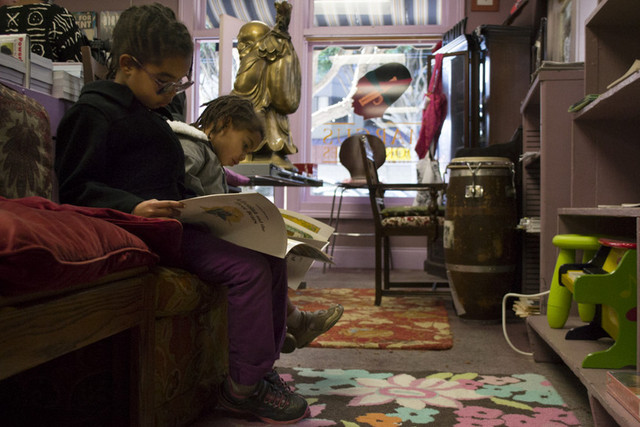
Marcus Books was back in the news last week. The historic African-American bookstore, which has faced eviction, now has a fighting chance to hang onto its spot on Fillmore Street. Community activists have launched an innovative planto attract grassroots investors to put up $1 million to save the store's longtime home. Marcus bookstore supporters are guardedly optimistic they can meet a February deadline to raise the money.
Reading about the bookstore's struggles reminded Lisa Pickoff-White, one of my newsroom colleagues, of an essay she had read over the summer by Jasmine Elizabeth Johnson. She's a postdoc fellow in African-American studies at Northwestern and the granddaughter of the store's founders, Raye and Julian Richardson. The essay, on the news and culture site Gawker, is in the form of a letter to her brother, who was shot to death in the Fillmore, about the changes in the neighborhood. It's a powerful statement of how the city has changing and about who's being squeezed out of the new San Francisco. One excerpt:
The good news is that the bookstore continues to do what it always has; it provides a house where black worth, literacy, and genius live uninterrupted. But the folks who used to shop there don’t live in the area anymore. And I think you would find it hard to believe, Khary, but now folks read books on phones as light and thin as candy bars. Remember the very first cell phone you owned, the one dad joked needed its own seatbelt?
When I take Gina Raye— your second newest niece—up the street for a walk, folks look at us like we're the anomalies. Which, I suppose, we are. Not only are there no black people around (save the homeless folk who are the only ones who know my name and ask about our grandmother's well-being—or about you, for that matter), the parts of Fillmore that folks are too scared to walk through are getting smaller, more narrow, less brown. Clacking high heels sound the street and dudes in leather boots smoke cigarettes on our stairs. They and their carefreedom clench up when we walk toward our steps. They seem so surprised when we pull out keys to enter our home.
Read the full essay on Gawker: Dear Khary (An Autobiography of Gentrification)